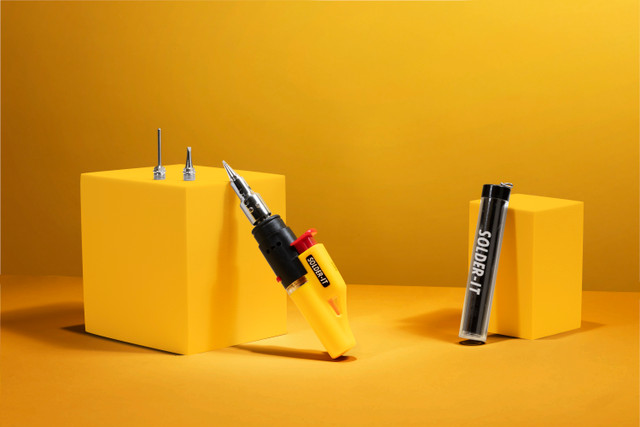5 Soldering Basic Soldering Terms Everyone Needs to Know
10th Aug 2023
The basics of soldering are important to the beginner and soldering expert alike.
If you’re beginning to solder, you want to learn everything you can. And veterans want to accurately answer questions about the soldering process. That’s why we’re sharing these basic soldering terms here at The Solder-It Blog. This post is designed to help you properly explain the soldering process to someone who wants to know. With that in mind, let’s start by answering this basic soldering question.
1. What is Soldering?
What’s the best way to see how much someone knows about a certain topic? Ask them to define what it is that they do. Look out for circular definitions, though. This is when they use the word to define itself. Here’s an example of a circular definition to answer this question.
“Soldering is the art or process of soldering two things together.”
See the circular nature of that definition? It doesn't give you the information you need. We define “soldering" as joining electronic parts by melting solder around a connection. This typically involves using a soldering iron, which we’ll define later. While we used the word “solder” in the definition of soldering, it’s not a circular definition. We’ll prove it by answering the very next question.
2. What is Solder?
This is the metal alloy that’s used during the soldering process. (Soldering and solder have two different but related meanings.) Melting solder is done with a heat-producing tool. When this molten metal cools and hardens, it makes a strong and conductive bond between the parts.
There are different types of solder for different kinds of soldering jobs. Most people prefer using lead-free solder to avoid the health risks that come with using lead. If you work on electronic components, avoid acid core solder. This can damage delicate circuits.
3. What is Desoldering?
Even if you’ve never soldered anything yet, you probably know what this word means. We’ll define it anyway because sharing information is the purpose of The Solder-It Blog. (The more you know, the more it will help you in your soldering journey.) Desoldering is the process of removing solder to unjoin or uncouple electronic parts. This is usually done when you need to remove a component or repair electronic circuits.
4. What is a Soldering Iron?
We told you that we’d eventually get to this. And for us here at Solder-It, it’s the best part. A soldering iron is a hand tool that heats up at the tip in order to melt solder at electrical connections. One end of the soldering iron contains the soldering iron tip. This part of the tool typically looks like a pen or pencil. The other end of the soldering iron typically houses the tool’s source of energy. This can either be butane or electricity, depending on the soldering iron you use.
5. What Are Soldering Iron Tips?
This question is bound to come up any time you discuss soldering irons. A soldering iron tip is a small piece of metal with a point at one end and an attachment at the other. You attach these tips to the soldering iron at the connection end. The heat generated by the tool’s power source travels down the soldering iron’s interior and gathers at the tip. Once the tip reaches temperatures that can exceed 800 degrees Fahrenheit, you’re ready to get to work. Soldering iron tips come in different shapes and sizes for different soldering jobs.
These Terms Are the Basics of Soldering
This information is extremely important to know, but it’s not everything. You also need basic soldering and desoldering techniques and advanced soldering knowledge. Fortunately, you have The Solder-It Blog for this and other important soldering information. We also carry the best butane soldering irons, soldering iron tips, and butane torches. Trust the experts at Solder-It for all your soldering needs.


